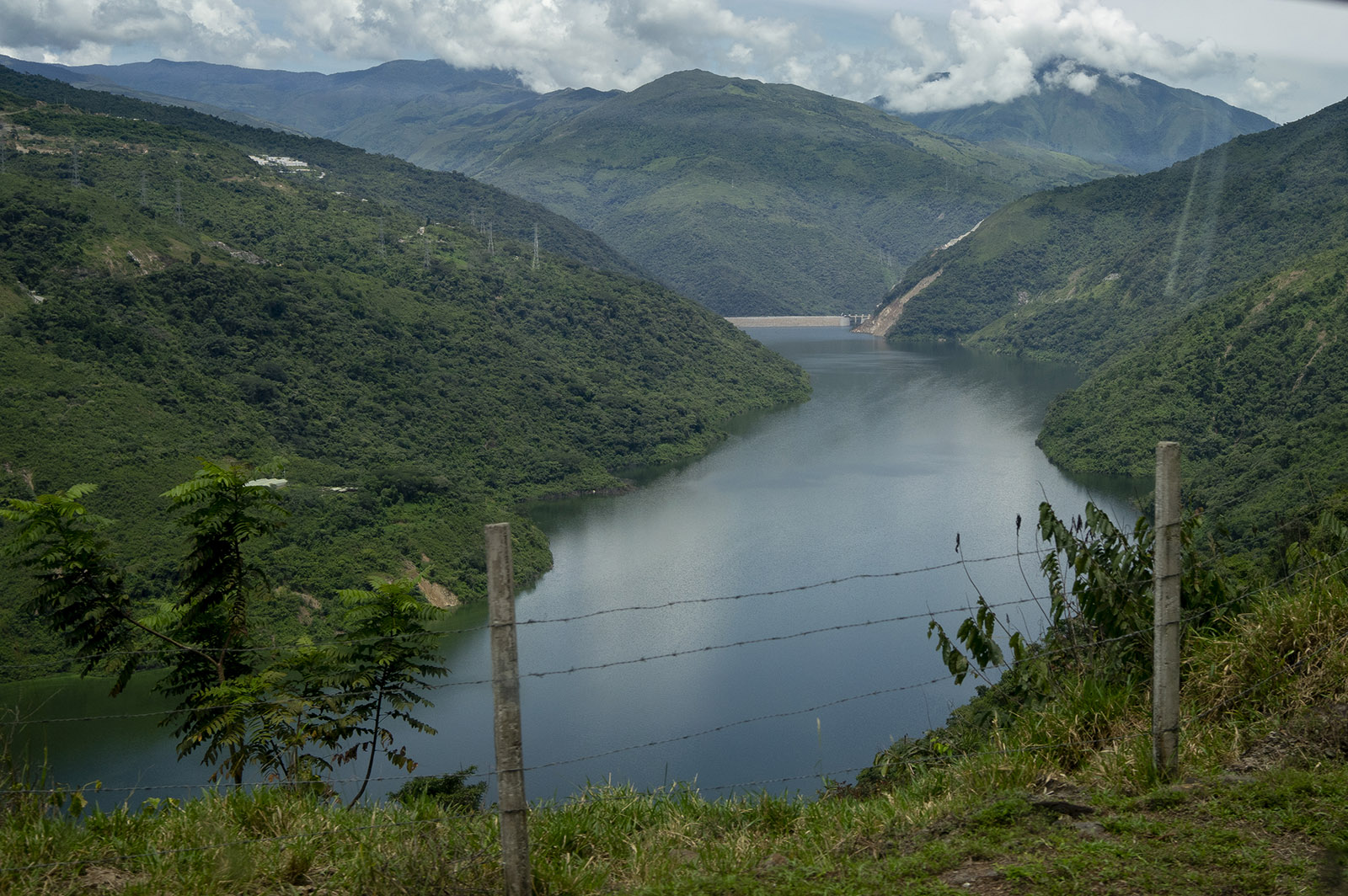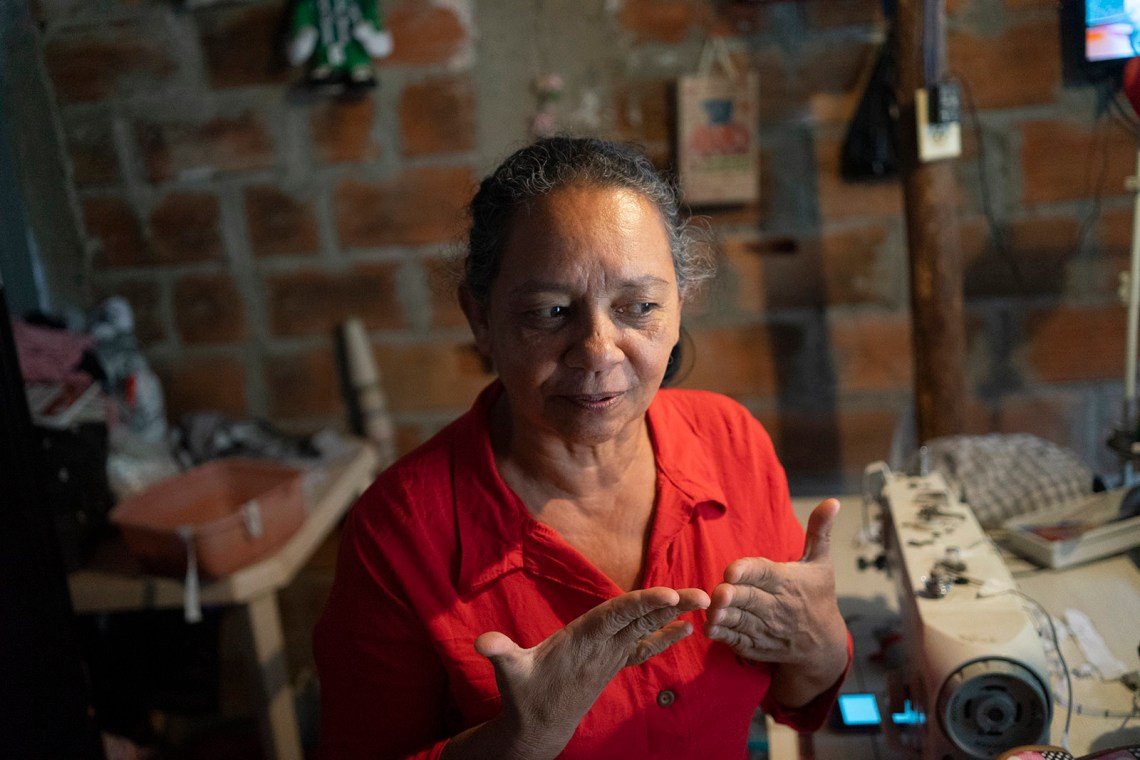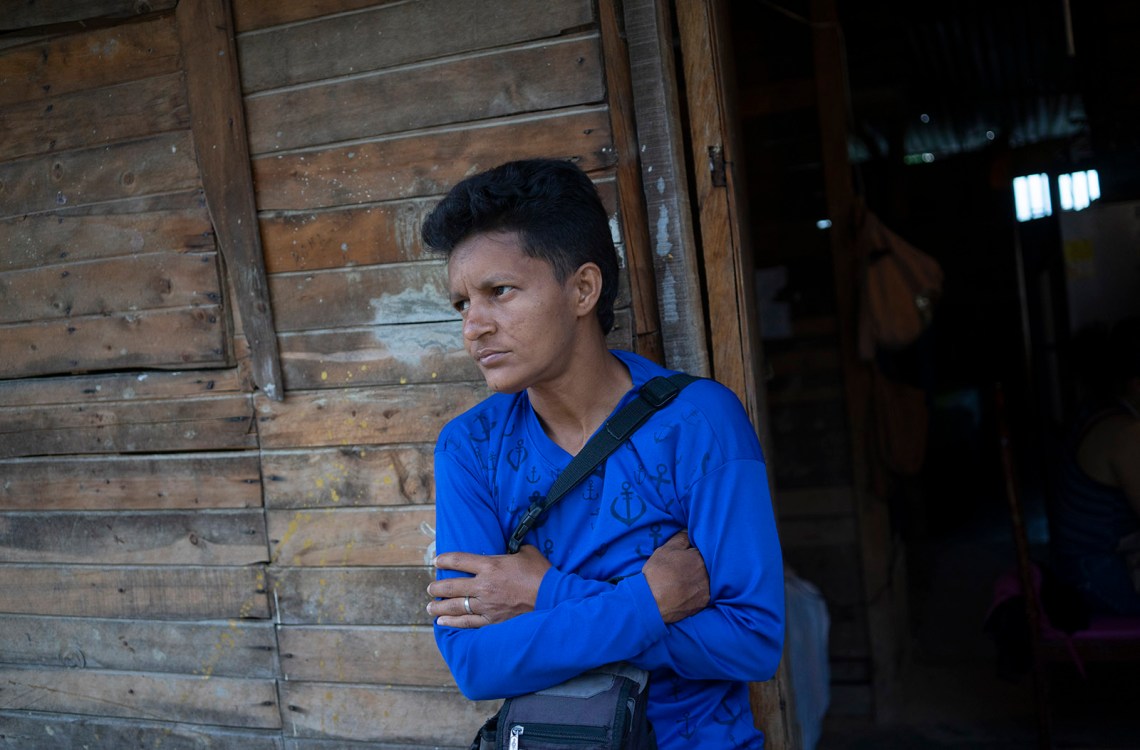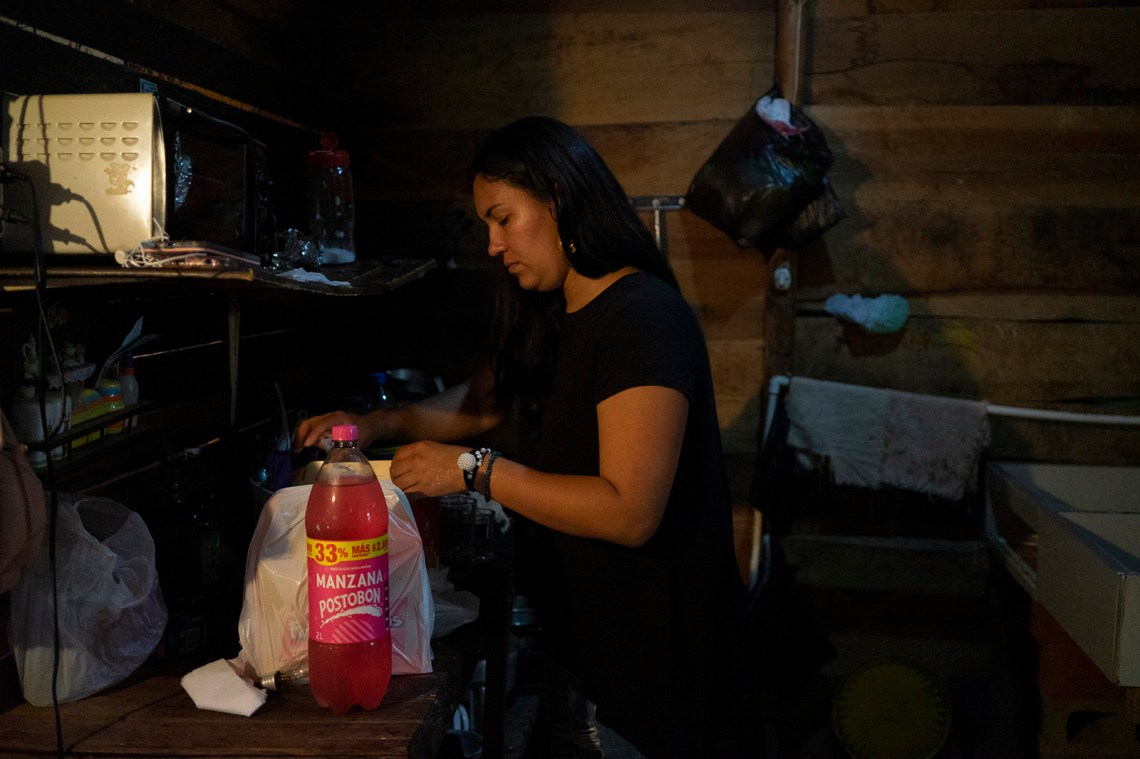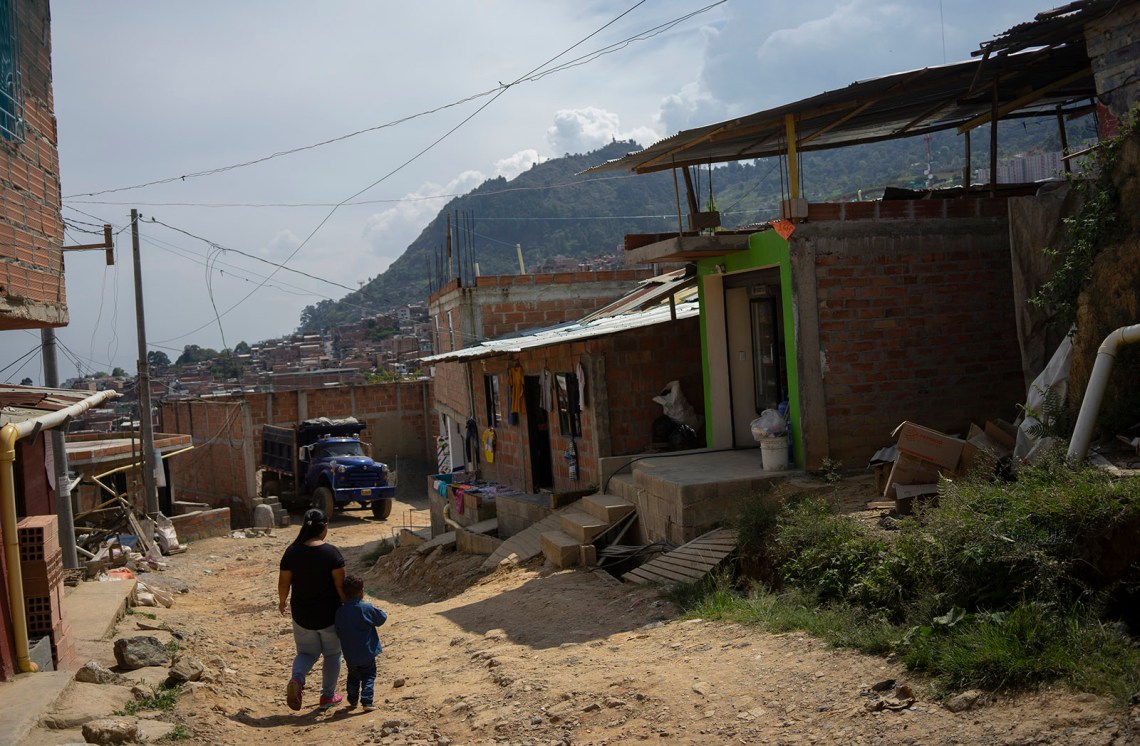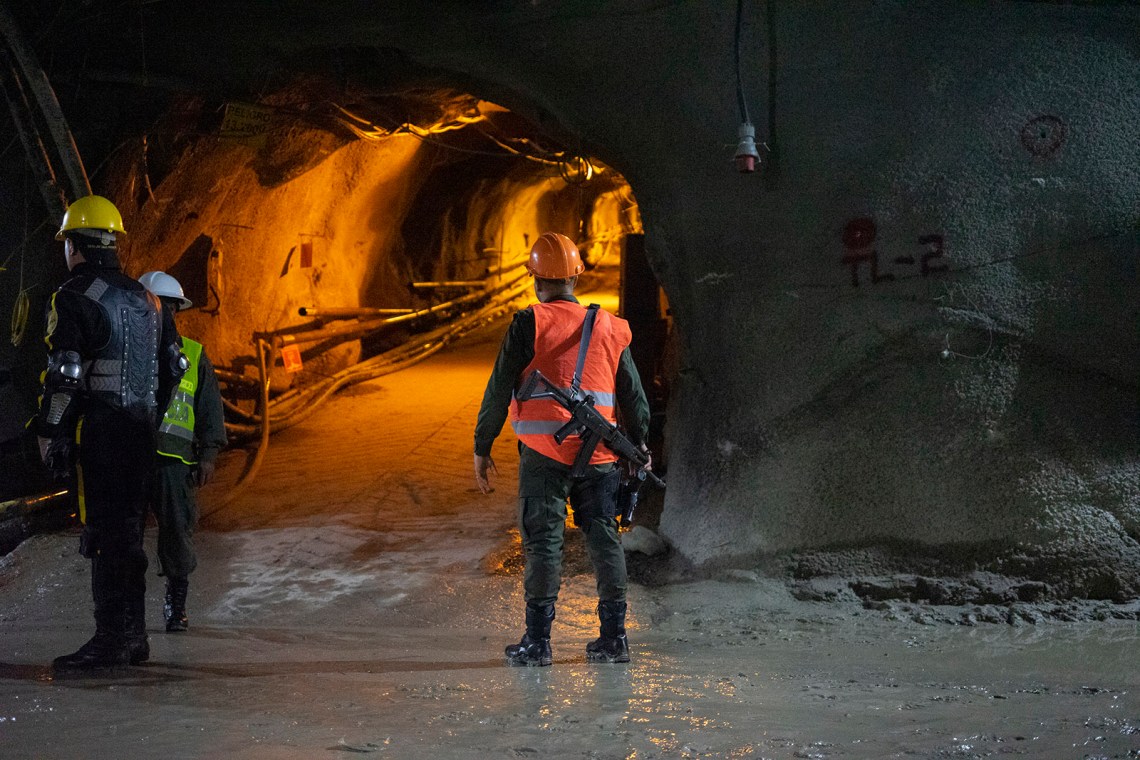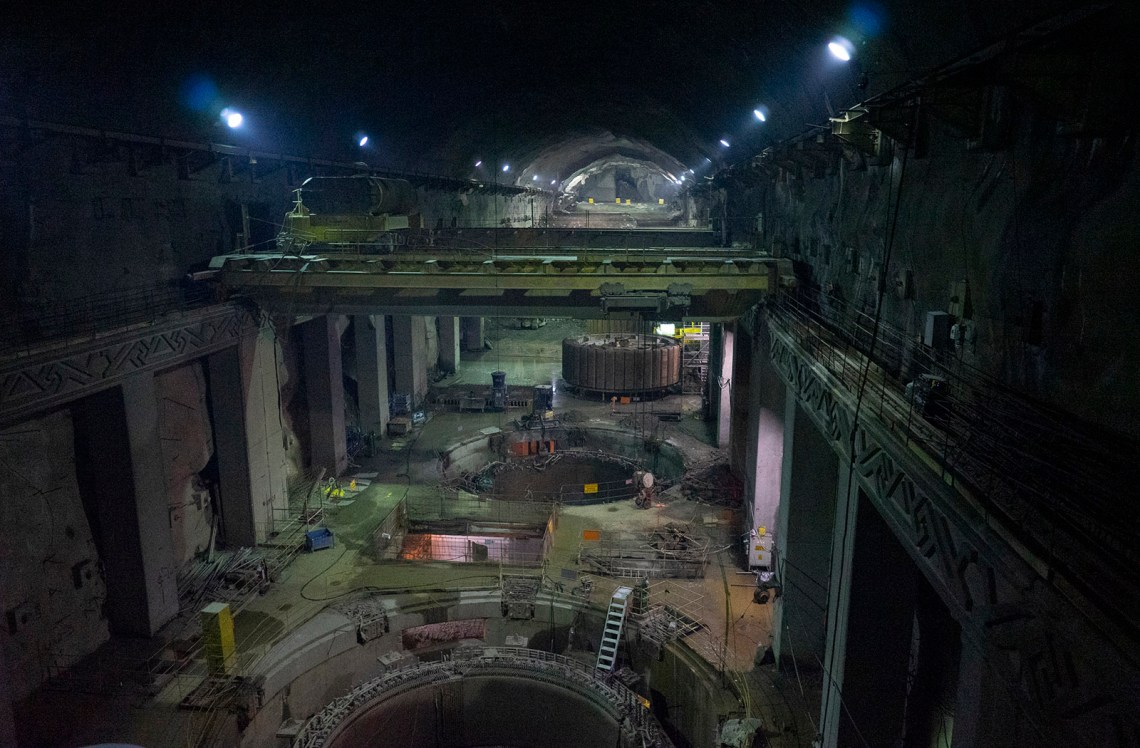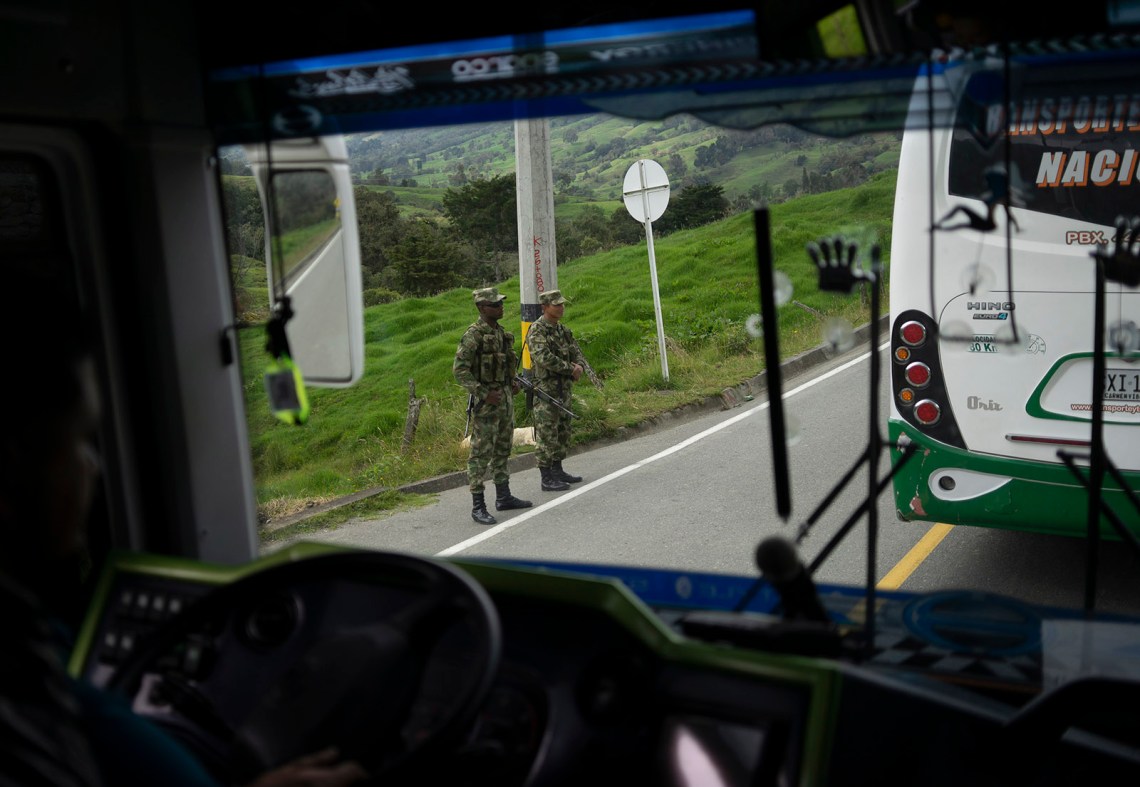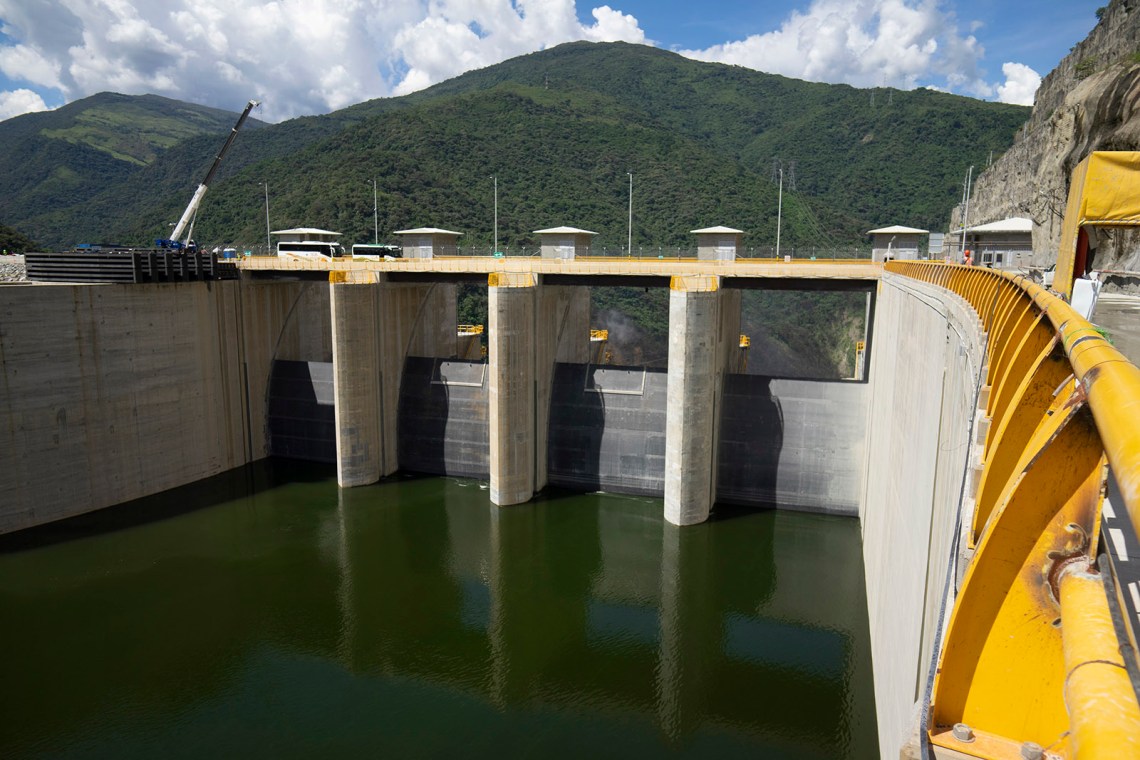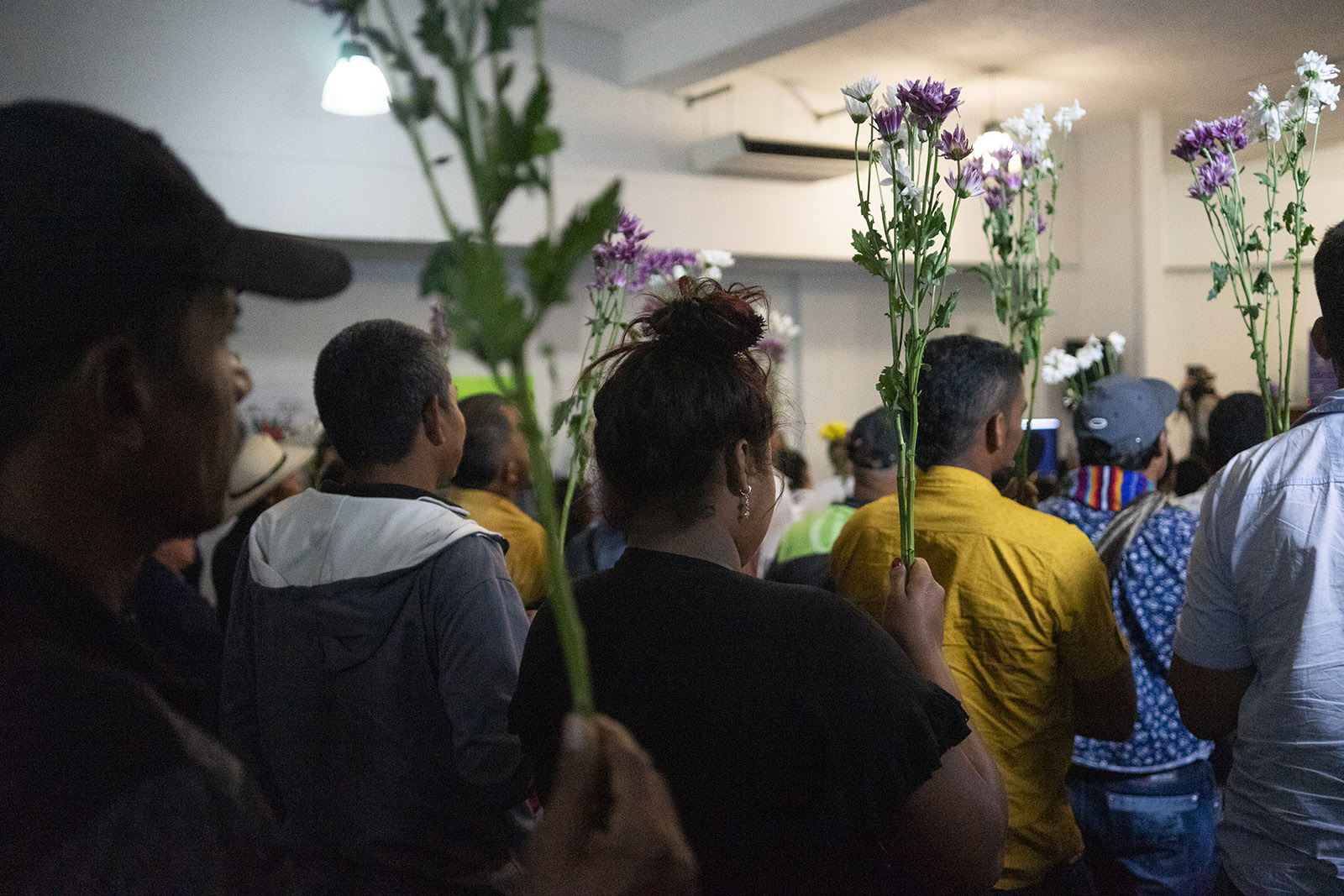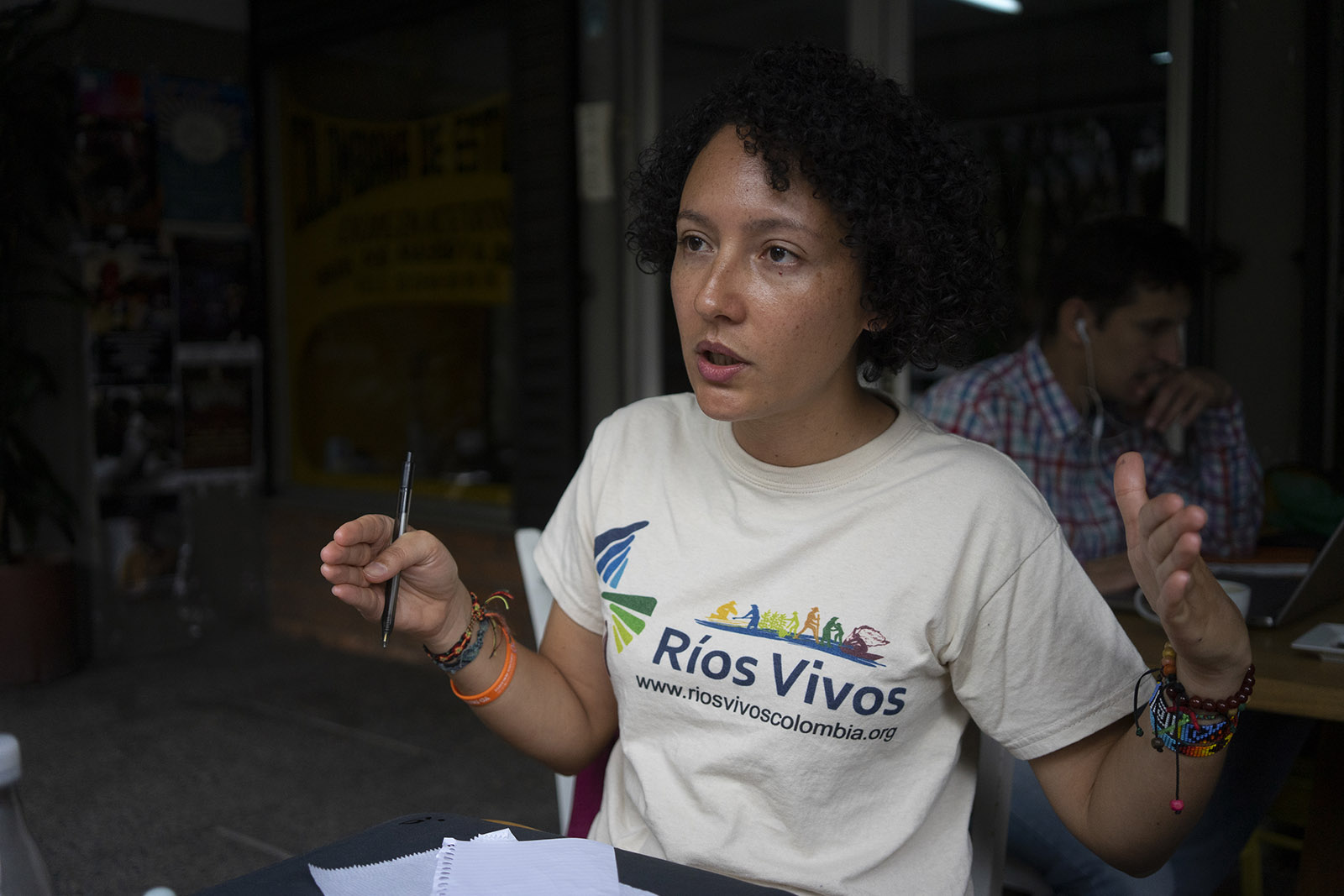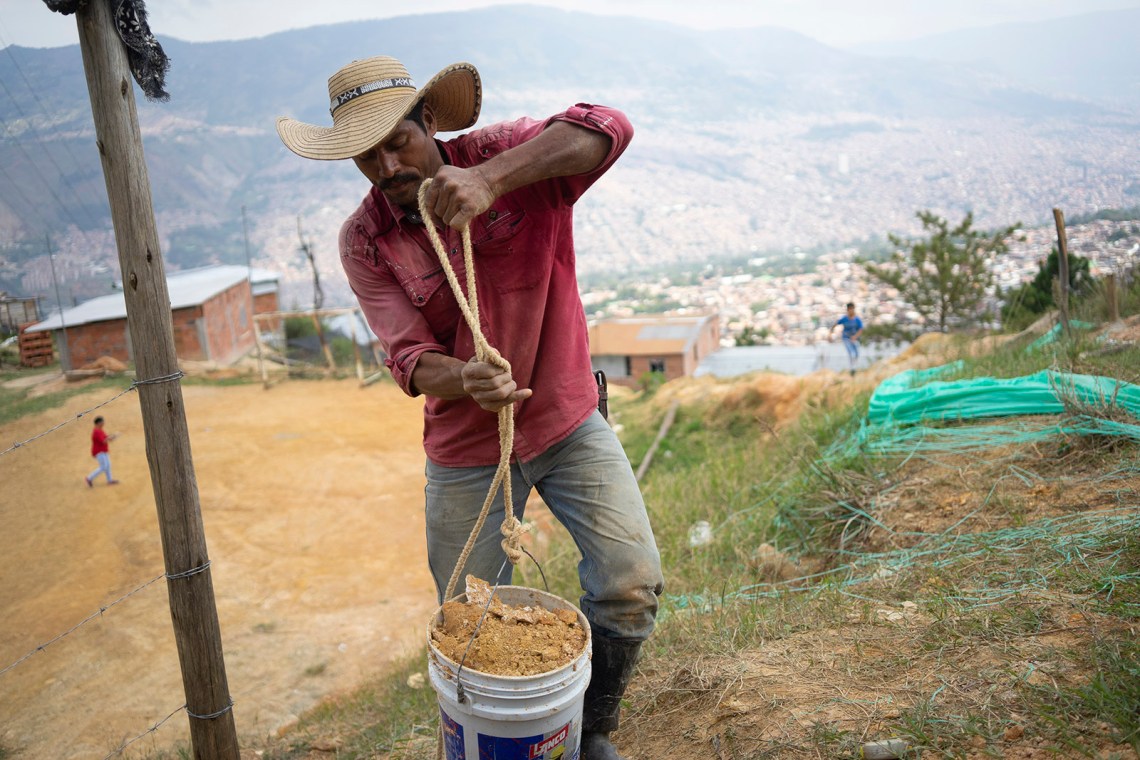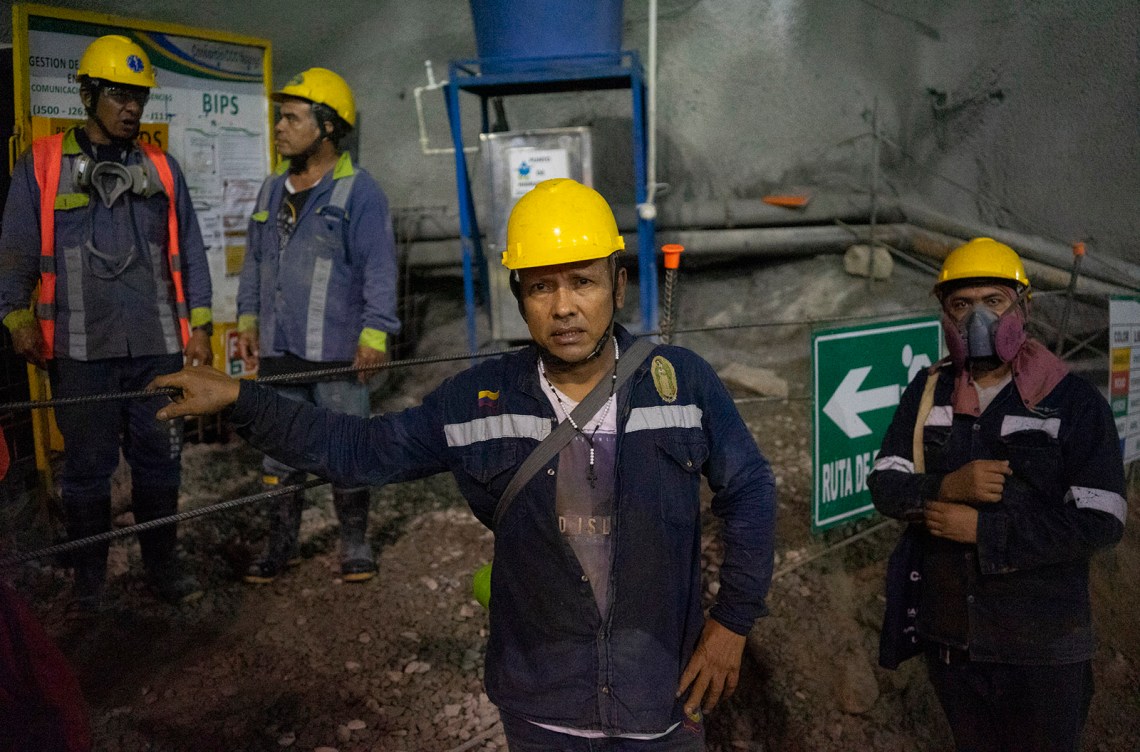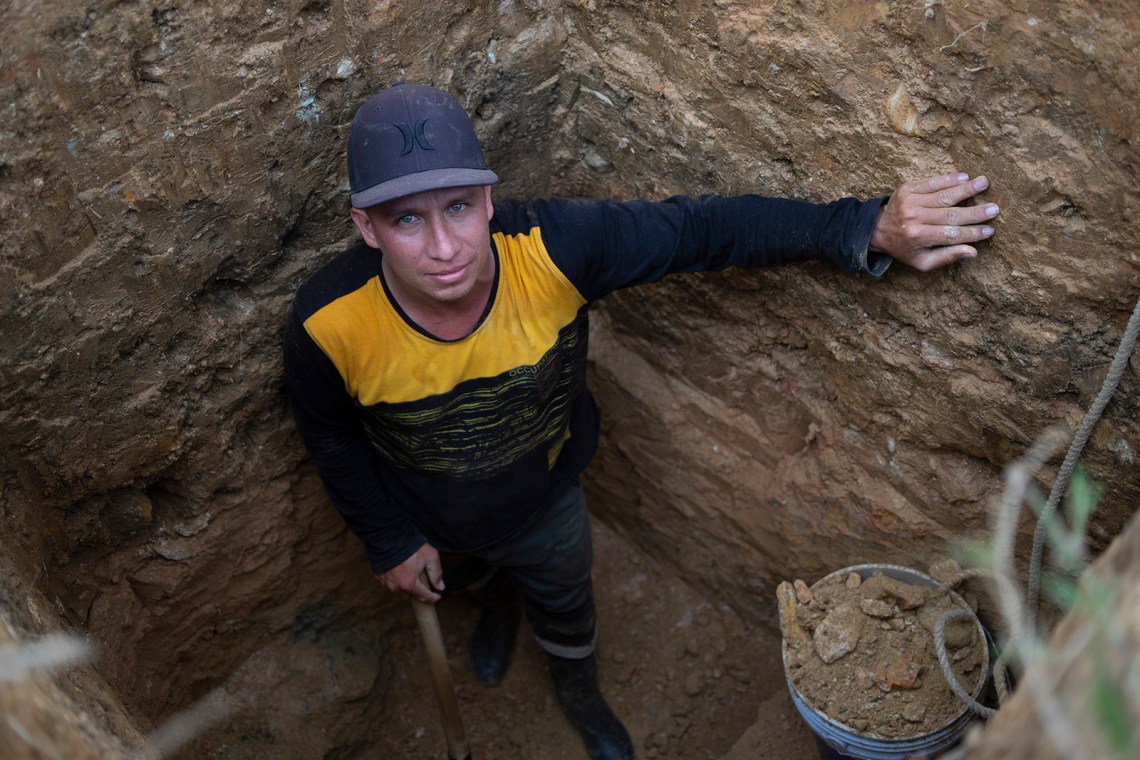The lower bowels of the Hidroituango hydroelectric dam, four hours outside of Medellín, Colombia, are generally reached through tunnels saturated with stale petrichor and air that grows thicker with every step downward. Tunnel walls shift from gray to mud-colored on the descent, and warm drops of water fall from the craggy roof. For eight months, these tunnels and chambers were the conduit for Colombia’s second largest river, the Cauca, and when I visited in October, the scars of the river’s visitation were evident in concave sections of the walls where eddies of water had abraded hollows. Workers were busy clearing sections where debris had collected during the water’s course.
Last year, a series of operational problems had forced EPM, Medellín’s publicly-owned electricity company in charge of the project, to implement an emergency plan. A diversion tunnel meant to redirect the flow of the Cauca River during dam construction collapsed on April 28, blocking the water’s only outlet and causing the reservoir to begin filling up prematurely, while the dam structure wasn’t yet completed. The rising water threatened to rupture the incomplete dam entirely, and the company had to decide how to release the pressure.
Instead of allowing the river to rupture the dam, EPM opened the underground chambers to allow water to flow through the powerhouse where the unfinished turbines were kept. As a result, enormous turbines, deep in the belly of the dam’s largest chamber, had been irreparably damaged and would have to be replaced. The date when the dam was meant to be operational had come and gone. But these engineering disasters were perhaps the least of the dam’s difficulties.
“If the water went over the dam, it would have destroyed it and generated a catastrophe downriver, in an area where approximately 130,000 people live,” EPM’s director of environmental and social works, Robinson Miranda, told me recently at the company headquarters in Medellín.
A few days after EPM sacrificed its turbine hall, in mid-May, the diversion tunnel re-opened on its own after the river broke through the collapsed rock. Within hours, enormous surges of water went pouring down on the towns downriver. Even though the water didn’t breach the dam, the pressure created by the reservoir meant that this rupture in the diversion tunnel created a sudden flood.
Colombia’s national disaster management agency gave evacuation orders to people living near the banks of the Cauca River. Eventually, some 17,000 people were told to leave their homes. People in the nearest town of Puerto Valdivia filmed the broth-colored water reaching the height of a local suspension bridge and eventually carrying most of the structure away.
Seventy-four houses in the town were swept away or destroyed by the churning river and many others were partially damaged. According to EPM, more than 2,200 families who lived in Puerto Valdivia were evacuated. Since then, the company says that 1,801 families have returned. The company representatives I spoke with were pleased with how they had managed the disaster; in their view, they had averted a potentially far worse outcome.
EPM is one of Colombia’s largest companies. It is the pride of many paisas, or people from the mountainous central department of Antioquia, in northwest Colombia. Its headquarters in downtown Medellín is a brutalist monolith with built-in energy-saving technology and a façade adorned with greenery. The company underwrites a host of nature programs on news channels across the country, and it advertises its message on sustainability on Colombia’s leading airline.
The Hidroituango Dam, with an anticipated capacity of 2.4 gigawatt (to generate one gigawatt of electricity through solar power, by comparison, would take more than three million panels, covering nearly 500 acres) is EPM’s flagship hydroelectric project, expected to provide some 17 percent of Colombia’s electricity needs. According to the Inter-American Development bank, one of the project’s financial backers along with the Chinese government, the dam was slated to offset 4.3 million tons of carbon emissions. That, along with the promise of economic growth and lower energy prices, were the reasons the bank gave for supporting the EPM project.
Advertisement
But last year’s series of mishaps and near-disasters at Hidroituango—which ignited a skirmish between local politicians and drew the intervention of then-president Juan Manuel Santos—only compounded EPM’s existing public relations problems over the project. Dogged by protests from downriver communities as well as resistance from people slated to be displaced from their homes by the reservoir, the dam walls continued to rise in the Cauca River valley amid rumors that armed groups were stifling dissent in order to continue extorting EPM. There has also been a series of murders of local community leaders, whose perpetrators have never been found. To many in Colombia, there was something eerily familiar about the seemingly inexorable progress of a big scheme built in the name of national necessity on a pile of corpses.
*
Down by the river, in towns like Puerto Valdivia, it’s almost always hot. Mountains clad in tropical forest rise steeply from the riverbanks. For decades, these wooded slopes and inaccessible valleys have provided cover for armed groups. This was territory once controlled by guerrillas who fought with the now-disarmed Revolutionary Armed Forces of Colombia (FARC), and which now serves as a base for at least four different armed groups, some of which are today little more than criminal gangs. At the same time, right-wing paramilitaries have been an almost permanent presence in the region, starting in the 1990s. For the people who live near the river, who rely primarily on fishing, farming, and panning for small quantities of gold, the history of violence is long.
A few days after I met with EPM officials in Medellín, a tribunal on the Hidroituango project opened a few blocks away in the city’s judicial building, convened by the Special Jurisdiction for Peace (JEP), which belongs to the suite of juridical mechanisms that came into effect with the peace process following the country’s November 2016 agreement with the FARC. In the course of Colombia’s armed conflict, one of the world’s longest-running, some 220,000–260,00 people were killed and at least another 25,000, perhaps as many as 80,000, were “disappeared,” presumed murdered, mostly by paramilitaries. Uncovering the trauma of those disappearances has become one of the defining themes of the peace process.
Part of the 2016 agreement included the establishment of a national unit to search for missing persons. Other efforts to account for the disappeared have included exhumations, both in cemeteries and mass graves, in an attempt to identify unaccounted-for human remains. The JEP had thus established a tribunal about the Hidroituango project specifically to investigate allegations that there were anonymous graves and burial pits in the twelve municipalities considered to be areas affected by the EPM dam. For at least a decade, farmers living in the region have said that there are undiscovered mass graves.
“You have my utmost respect for your dignity and resistance, and your insistence in reclaiming your loved ones,” the director of the missing persons search unit, Luz Marina Monzón, told dozens of victims’ family members who were gathered on one side of the tribunal hall. Over the course of two days, the victims’ families and a growing gaggle of reporters listened to testimony from the prosecutor’s office, a former FARC commander turned politician, EPM’s officials and representatives from the governor’s office. One of the leading activists campaigning against the dam, Isabel Zuleta, said that over the course of the armed conflict, there have been 1,013 forced disappearances in the affected areas. The president of the national victims’ movement pointed out that, overall in the department of Antioquia, one of the most violent zones of the conflict, there were 17,214 disappeared, including 3,068 victims of extrajudicial executions.
The prosecutor’s office said it had exhumed 196 corpses in the area affected by the dam, and a geographer from the JEP estimated—based on the average distance between site of execution and grave—that there would still be some 471 cadavers to be recovered. The prosecutor’s office insisted that it had conducted searches for such suspected new graves, but a representative from the governor’s office admitted that there could be more yet to uncover.
At one point, a forensic anthropologist named Timisay Monsalve Vargas, who had been in charge of exhuming known, formal cemeteries for EPM, took the stand. These cemeteries were exhumed, she explained, to move them from the reservoir site that was set to be inundated; the people who had been living in the three villages in the area were relocated under agreements with EPM, mostly to towns nearby. Monsalve said that, in the course of her work, she had exhumed 349 bodies from local cemeteries. She had seen to it that the garments in which they had been found were washed for their families to identify them, but only twenty-five of the total had been identified; the other remains were stored at the laboratory facility where she worked at the University of Antioquia. Although it is not uncommon to find victims of paramilitary and guerrilla violence buried in cemeteries, rather than mass graves, Monsalve said she had examined the remains for signs of violent trauma and found no specific evidence that they belonged to people who had been forcibly disappeared.
Advertisement
As Monsalve spoke, a few people who had been sitting on the side of the hall reserved for victims’ families stood and left, tears streaming down their faces. During a break in the proceedings, Zuleta stood in front of a handful of television crews and gave interviews about the testimony. “The people in those cemeteries had families who are looking for them. Now we don’t only have the living who been disappeared, but the dead who have been disappeared,” Zuleta said, her hands quivering with anger. While some had anticipated confusion over the number of grave sites, the fact that hundreds of corpses in established cemeteries had been moved without identification or notice came as a surprise for many.
As one of the most outspoken activists of Ríos Vivos, an association of local fisher and farmer organizations opposed to Hidroituango, Zuleta has become the de facto leader of the resistance to the project—a dangerous position in a movement that has seen six of its members murdered since they began protesting the dam. When the hearing reconvened, a dozen of those sitting on the victims’ side of the hall had painted their faces ghostly white and donned shirts that read los muertos tienen mucho por decir (“the dead have much to say”).
After the proceeding, one of the women who’d testified at the tribunal told me that she thought the dam had caused even more displacement than the years of armed conflict had. The woman didn’t want to give her name for fear of retaliation; I’ll refer to her as Gloria Munez, a pseudonym. A few weeks before the diversion tunnel opened, in May 2018, setting loose the fluvial surge that tore houses downstream from their foundations, two Ríos Vivos organizers had been shot dead during protests. Although no one knew for sure who had pulled the trigger, Munez traveled to Medellín to advocate for a proper investigation and against the impunity of the killers. When she received word that the diversion tunnel had become blocked, ending the flow of the river and drying the riverbed near her home, she traveled back to Puerto Valdivia. Just a few days later, when the blockage broke up, a torrent of water poured through her village. “We had to abandon everything,” Munez told me. “The animals, everything.”
It had been more than a year since what she called the avalanche, but Munez told me she wouldn’t go back to her home in Puerto Valdivia. She was too afraid that the tunnel, blocked once more by an internal landslide, would burst open and unleash another flood on her village. Instead, she moved to a house further up the mountain, where she is trying to cultivate crops on a little plot of land. She told me that this meant starting over from scratch. As a fisherwoman and small-scale gold miner, her livelihood had always been derived from the riverbanks. She has no idea how to grow enough food to survive. When I asked later for her WhatsApp number, she warned me that her phone is almost always off; in the house where she now lives, on a hillside in the forest, there is no service or electricity. Once a week, she walks three hours to participate in an extension course where she is studying agricultural management. The journey involves crossing the river, but since the bridge was swept away last year, she fords the water with her belongings in a plastic bag on her head.
*
I met with Zuleta, the activist with Ríos Vivos, at a coffeehouse in a quiet part of Medellín, where we discussed the tribunal and the dam in general. “Environmental violence doesn’t allow you to return,” she remarked. Talking with her, I saw how the Hidroituango dam seems caught between the competing tensions of two impulses: the need to reckon with the crimes of the armed groups and their victims on one side, and the imperative to move forward, to build a prosperous future on the other. EPM’s vision might be anchored in the latter, but to Zuleta and Ríos Vivos, the past was seeping into the future, and the violence involved in constructing the dam seemed little more than a continuation of the violence that defined the conflict.
EPM has developed programs for people directly affected by the dam, but the wider consequences of a drastically altered ecology and changed landscape have reverberated beyond the obvious immediate emergencies. To Isabel Zuleta, the irrevocable loss of a place—including all the unresolved issues of the disappearances and the victims’ remains—is the worst, final act of violence against its people. “That is incredibly painful,” she told me. “Because we, the displaced, have fought for the right to return. Without the possibility of return, it can no longer be considered displacement—it’s an uprooting. It’s an exile. That’s the magnitude of the impossibility of return. And you cannot return to a territory that has been destroyed.”
One of the places where the exiled have tried to rebuild is a neighborhood evocatively called Nueva Jerusalem, one of the newest of the informal settlements that have developed up the hillsides around Medellín. When I visited, after the tribunal, the neighborhood didn’t yet have public transportation or even roads on which hypothetical future buses might drive. The people who lived there illegally tapped into the electrical grid to get power and lighting, and the one school comprised a rickety shack made of brightly painted disintegrating wood slats, overstuffed with little desks.
High on the hillside, above a makeshift soccer pitch and near the tree line, two men originally from Puerto Valdivia were digging a hole to lay the foundation for a house. They were both farmers who had once marketed their oranges and yuca to the villagers who’d lived by the river, but they said there was no one to sell to anymore. Instead, they dug into the chalky dirt of this bluff overlooking Medellín. Below, the city smog cast a smudgy patina over the horizon. It was hard to believe anything might grow there.
The reporting for this story was supported by the International Women’s Media Foundation as part of its Adelante Latin American Reporting Initiative.


